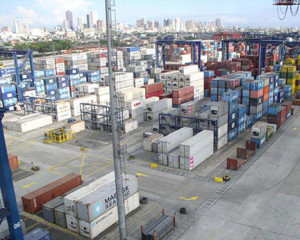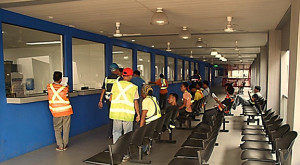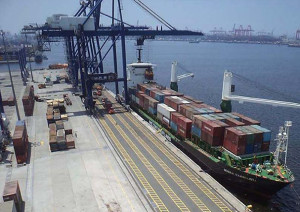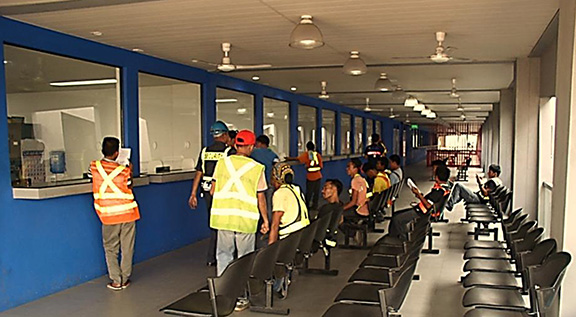
The development of Manila North Harbor is in full swing as its operator, Manila North Harbour Port, Inc. (MNHPI), gets ready to open two operations centers and launch a new terminal operating system (TOS).
The two operations centers—one each in Terminals 1 and 2—are almost complete, according to MNHPI Chief Executive Officer Richard D. Barclay in an interview with PortCalls. Two shipping lines have already transferred offices there. Barclay said the rest of the carriers will move their offices to the centers during the third quarter of this year.

The new facilities represent one-stop shops, housing under one roof the offices of MNHPI, Philippine Ports Authority (PPA), shipping lines and other port stakeholders. MNHPI will be introducing shuttle buses to ferry port users to and from the centers.
Barclay said MNHPI has so far spent more than P8 billion for the various infrastructure, equipment and information technology modernization initiatives.
Beyond the operations centers, MNHPI is constructing a building, to be finished by the third quarter of this year, for its direct port workers. A new home will also be provided for the port’s Halfway House, more commonly known as “Bahay Silungan sa Daungan”, built to provide temporary shelter to victims of human trafficking, especially women and children.
New TOS
The introduction of Navis SPARCS N4 will make Manila North Harbor the first domestic terminal in the world to use the latest generation TOS by Navis, according to Barclay.
Already in use in more than 100 terminals globally, Navis N4 will be implemented across all Manila North Harbor operations, including its container, bulk and break bulk, roll-on/roll-off, and lift-on/lift-off operations. It will provide operational visibility to clients who want to check the status of their cargoes.
N4 is anticipated to go live during the second half of the year, when all shipping lines have transferred from their satellite offices to the newly-built operations centers.

With the new TOS and operations centers, Barclay said that by the third to fourth quarter of this year, “there will be no more inner gates here.” Trucks won’t have to queue but can just proceed to the weigh bridges and operations centers to process documentation, then go to their designated container yard. At Terminal 1, there are four weigh bridges and two passing lanes located 200 meters from the gate.
In order to automate truck operations within the terminal, MNHPI is closely coordinating with port truckers, in particular the Integrated North Harbor Truckers Association (INHTA), on the requirement for trucks to display plate numbers on both its sides and on top. This allows the gantry crane operator to see if the truck positioned below is the right one, and for the reach stacker operator to know if it is pulling out a container from the right truck. Manila’s international ports already use the same system on trucks for easier identification.
Before MNHPI commenced operations at Manila North Harbor, Barclay said depth at the facility was originally from 5 meters to 7 meters only. Now some areas are as deep as 10 meters; there are plans for additional deepening to 13 meters.
Barclay noted, however, that “no matter what we do in the port, there has to be an efficient road system for containers to get in and out of the terminal.”
He noted that the Port of Manila is one of the few ports globally with no direct access road, and with trucks having to share traffic with other commercial traffic and motorists. He pointed to the need for elevated highways or access roads directly connecting ports to the North and South Luzon expressways, a suggestion shared by operators of Manila’s international terminals.
This year, MNHPI aims to handle 1.1 million twenty-foot equivalent units, 9% higher than the 1.009 million TEUs recorded in 2014. The 2014 volume was 14% higher than the 886,000 TEUs processed in 2013.
Passenger volume improved by 15% to 1.5 million passengers in 2014 from 1.3 million in the previous year.
For the first quarter of 2015 alone, Manila North Harbor handled 259,000 TEUs.
MNHPI currently has six quay cranes, 20 rubber-tired gantries and 21 reach stackers as part of a fleet of various other equipment utilized at the port. – Roumina Pablo





